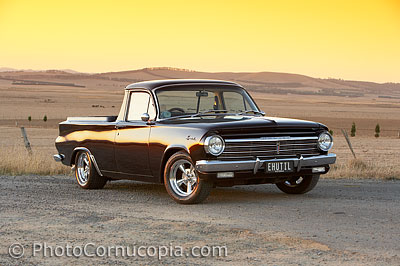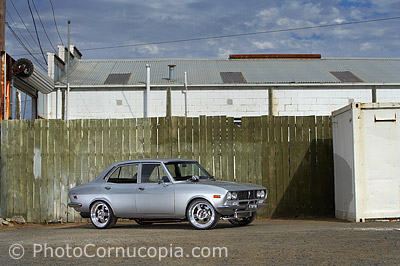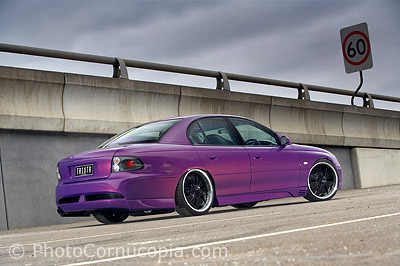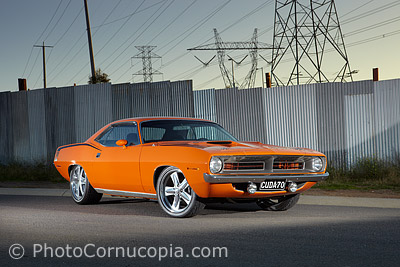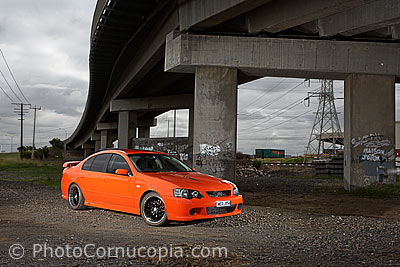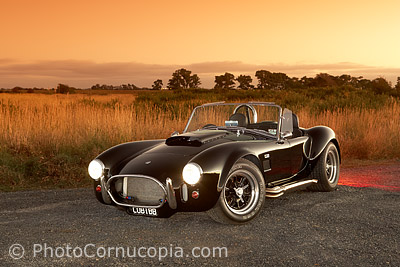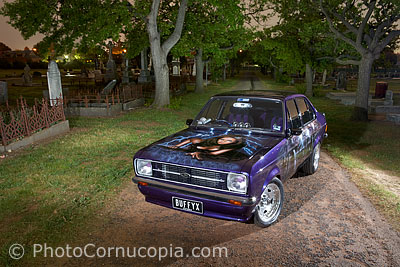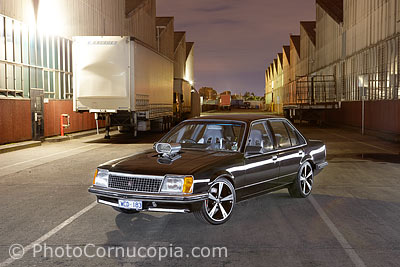A cloudless
sunset or sunrise acts like a huge soft box, the size of the sky
itself. This soft light is great for showing the shapes and forms of
panels. If you are lucky enough to be able to rely on such sunsets then
you should take advantage of them. The lighting setups in studios often
try to mimic a cloudless sunset! A dark colour or straight (non
metallic) paint might work best with a soft or reflected light, such as
sunset, which can create a gentle tonal gradation from light to dark
which can highlight curves and shapes much better than a direct light
can.
 |
|
 |
| The two images above and right are the same except for the
lighting used. The image above was shot simply using ambient light and
processed to suit. In this case the image is quite drab due to flat
overcast lighting. The same composition and lighting may have worked
much more effectively at sunset and with vibrant colours in the sky and
being reflected in the car. |
|
In this
image the car was lit (with strobes) to make it stand out from the
background. The drab overcast lighting becomes an advantage as it is
fairly easy to overpower and darken so as to make the car stand out.
This image is clearly the stronger of the two and illustrates the
usefulness of artificial lighting.
|
Hard or direct light might suit a metallic
paint finish because it can bring out the colour, or make it 'pop',
much better than a soft light such as an overcast sky. This is where
strobes or flashes can be very useful. Strobes can also be very useful
for isolating the car from the background by underexposing the
background but lighting the car with the strobes, or simply when
shooting at night.
Painting with light is another technique which
can be used for its own unique look or simply to light the car without
any signs of it's use, either is possible and will be detailed later.
Black cars, or very dark colours, respond badly to strobes but can
respond very well to light painting with a continuous light source.
Selecting the most appropriate lighting
technique can depend on many factors, some of which are determined or
driven by factors out of your control such as the colour of the car or
the ambient lighting itself, but ultimately your choice of lighting
should be an aesthetic or artistic choice wherever possible.
